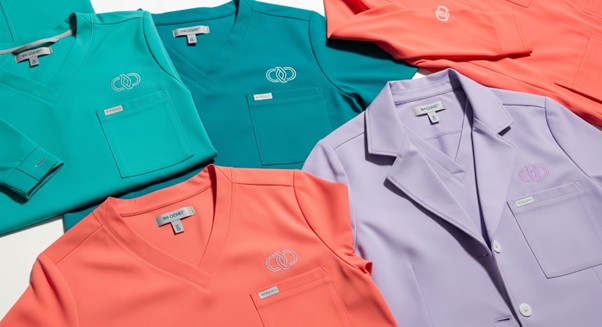Colour Trends Shaping Branded Workwear
Uniforms have gone beyond navy or black. Employers have realised that the presentation of their staff can serve as a representation of their brand. As this has changed, companies have adopted palettes that are both functional and fashionable, aligning with their corporate narrative. The use of modern tones in uniforms, outerwear, and accessories denotes the culture of a company and supports the image it projects to its clients and customers. Personalised beanies are an example of how colour selection can contribute to teamwork and individuality in day-to-day clothing.
Neutral Foundations With Modern Twists
Traditional colours have continued to feature in the core of most workwear collections, although there have been changes in recent years that are more modern, without compromising their professional appearance. Muted greys, taupes, and charcoal are common and rather subdued bases. A slight touch of colour, like a faint blush, olive or steel-blue stitching, will add some definition without making it too bright. The clever little extras enable the companies to make a mark subtly so that clothes are not overly stylish, but at the same time, they do not look worn out.
Bold Tones for Visibility and Impact
The need to remain safe is keeping high-visibility colours in high demand, but bold colours are no longer exclusive to construction or logistics. To become memorable, restaurants, retail areas, and event crews are turning to bold colours like emerald, deep orange, or deep burgundy. Bright colours attract attention, boost awareness and create a feeling of liveliness. When done right, these colours turn the plain work attire into fashion that strengthens a brand’s personality.
Seasonal Influences on Staff Apparel
There is no use denying the fact that there is an impact of fashion trends on the design of uniforms. Spring could bring on pastel tones, and autumn may be more inclined towards palettes that are grounded in the natural environment. Hotels and restaurants, in particular, frequently update their aprons and other accessories with season-themed colours to match a menu change or a themed occasion. Such flexibility means flexibility and helps to reinforce in customers the idea that even such a minor detail is worth paying attention to.
Sustainability Driving Colour Choice
The growing emphasis on eco-friendly materials affects more than fabric composition. Dye processes and sustainable pigments are increasingly selected to reduce environmental impact. Shades inspired by organic elements, forest green, clay, sand, and sky blue, symbolise responsibility and conscious design. Beyond aesthetics, these colours signal a commitment to wider values, appealing to clients who view sustainability as a deciding factor when choosing partners.
Industry-Specific Preferences
Different sectors naturally lean toward distinct palettes. Calming blues or greens are commonly used by healthcare providers to create feelings of trust and reassurance. To focus on innovation, creative agencies can accept unconventional neon or contrasting blocks. Corporate offices tend to have subdued palettes with fixtures that are graceful and demonstrative of reliability and professionalism. When companies customise shades according to industry conditions, then staff attire will be sending the appropriate message.
Customisation and Brand Identity
In addition to choosing trendy colours, companies are currently concentrating on developing bespoke colour palettes that are exclusive to their company. Online embroidery, contrast stitching, and organising accessories are all aspects that lead to integrated fashion. An example would be matching a tie or scarf with the main colour of the company logo, which will create instant recognition. These selections transform uniforms into something more than clothing since they are extensions of the branding strategy.
Colour as a Strategic Tool
Workwear proves that colour goes far beyond what is stylish. It influences perception, enhances awareness and develops cohesion among employees. Neutral bases, mixed with audacious colours, seasonal extensions, and eco-friendly collections, give companies a chance to be unique without shifting their values. Through customisation, every colour has a role to play in the identity of a company, as uniforms can and will continue to be an essential part of professional presentation.








